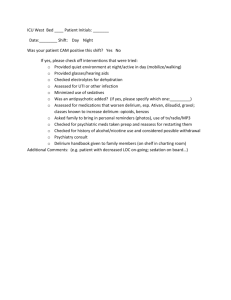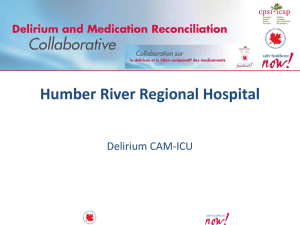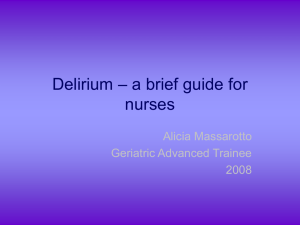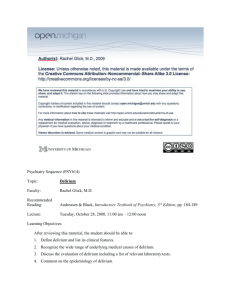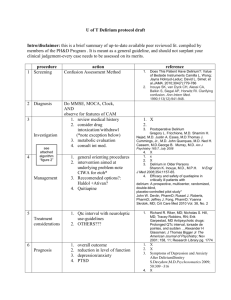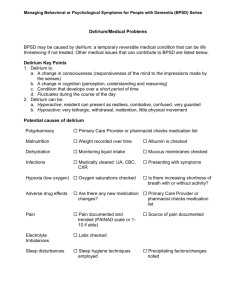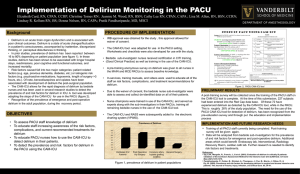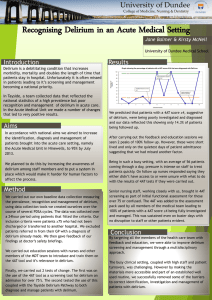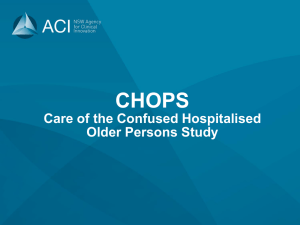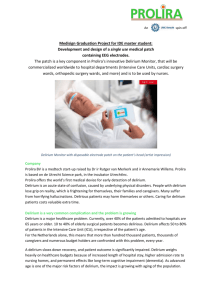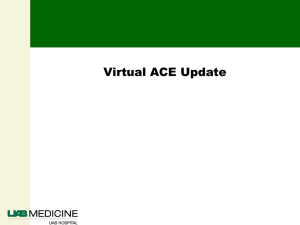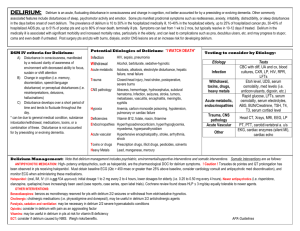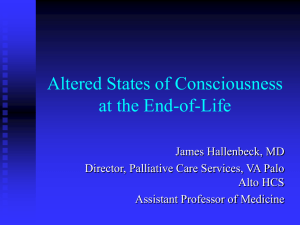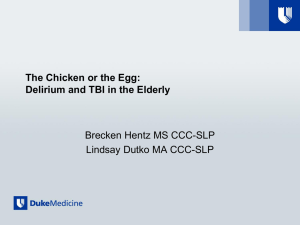Saskatoon Health Region Storyboard and Rapid Fire Delirium
advertisement
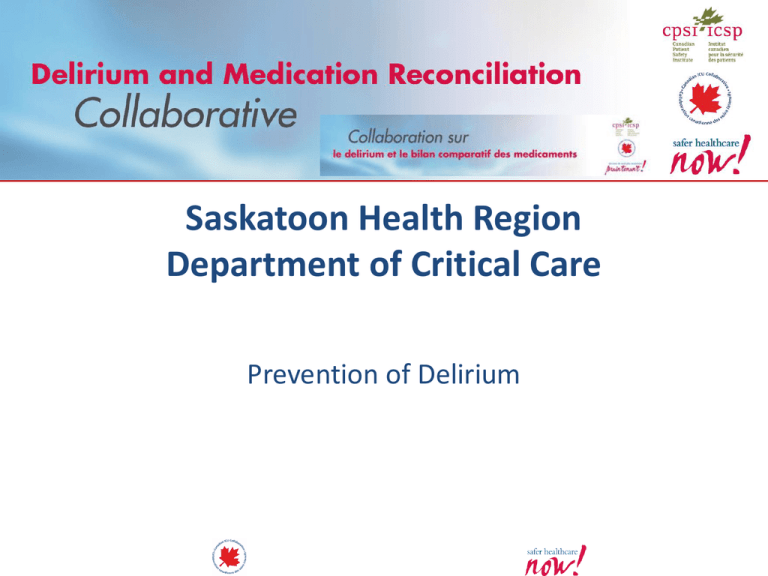
Saskatoon Health Region Department of Critical Care Prevention of Delirium Background • The Department of Critical Care in the Saskatoon Health Region is made up of 3 units on 2 sites. – Royal University Hospital Intensive Care Unit – 15 beds and 2 satellite beds. – St. Paul’s Hospital Intensive Care Unit – 15 beds. – St. Paul’s Hospital Progressive Care Unit – 8 beds. 2 Aim • To reduce the incidence of delirium in critically ill patients and to standardize and improve management of patients with delirium. We aim for this project to be part of an “ABCDE bundle” approach to the care of our critically ill patients. • Goals/Objectives – To assess for and report delirium q shift and when changes in patient condition. – To implement a mobility protocol to guide mobilization of all patients to their maximum capacity each shift 3 Team Members • There are multidisciplinary team members representing each unit, some team members work across all 3 units. • There are physicians, RN’s, Physiotherapists, Pharmacists and Dieticians. • The team is sponsored by the Director and Physician Leader of the Department of Critical Care – Patti Simonar and Dr. Mark James 4 Results Incidence ofDelerium Delirium Incidence of 50% 40% 30% Pts. Unable to Assess Cam Positive 20% 10% 0% 14-Feb-12 28-Feb-12 13-Mar-12 5 Results date Dec Nov Oct Sept August July June May April March 100% 90% 80% 70% 60% 50% 40% 30% 20% 10% 0% Feb percentage Active in Mobility protocol SPH-ICU 2011 Results Mobility Protocol Charted 100% 90% 80% 70% 60% 50% 40% 30% 20% 10% 0% 14/02/2012 Mobility protocol charted 28/02/2012 13/03/2012 7 Results Average Days of Duration of Delirium SPH PCU SPH ICU 0 2.5 May-15 2.3 0 2 2.2 2.3 3.6 Apr. 30 RUH ICU 4 6 8 10 Changes Tested – Utilization of CAM-ICU Assessment Tool Changes Tested – Implementation of a Mobility Protocol Lessons Learned • Difficult to do the CAM-ICU if patient a RASS of -3; using the criteria of a RASS of -2 or greater to do the assessment • Importance of education of staff that CAM-ICU can be assessed if patient is a RASS of -2 or greater as they often feel that they cannot assess patient if they do not squeeze hands and fail the test for inattention. • Challenges with ensuring that patients are being mobilized to their maximum capacity. • Patients are often confused but CAM-ICU negative 11 Next Steps • Identify other contributing factors and interventions to reduce incidence and duration of delirium – such as day / night protocols. • Implementation of a checklist that includes delirium and mobilization goals • Intermittent measurement of incidence and duration of delirium to observe trends. • Explore ways of measuring mobilization. 12
